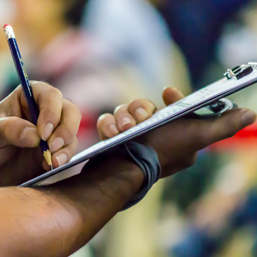-
Written by Carol Henke
Every year, children attending school (K to 12) participate in at least six school fire drills – three in the fall and three in the spring. This is mandated by the National Fire Code, Alberta edition. If you do the math, that is 78 fire drills during your child’s school years. Children learn from a very young age exactly what to do when that distinct and loud alarm activates at school. Virtually every time, and in mere minutes, children make their way safely and quickly out of their classroom to their designated meeting place in the schoolyard.
The situation is different at home where people feel most comfortable. At home is where you and your family may actually be at greatest risk of being seriously injured or dying in a fire. If a fire breaks out in your home, you may only have a few minutes to get out safely – if your smoke alarm activates. If your smoke alarm has expired or the batteries are dead or if the fire starts while you are asleep, you and your family’s chances of escaping safely are dramatically reduced.
The Calgary Fire Department recommends that you practice your home escape plan at least twice per year at unexpected times to keep the drill as realistic as possible. This will help your family feel prepared and calm in the event of a real fire emergency.
The following tips will help you plan a home fire drill and practice your home escape plan:
- Make a home escape plan by drawing a map of your home which shows all the doors and windows. If you live in a high-rise apartment or townhouse complex, include doors, windows and stairwells in common areas. Discuss the plan with everyone in the home.
- Ensure you have two ways out of every sleeping area and that windows open easily. Consider investing in safety ladders for escapes from second or third floors (these can be purchased at home improvement centers). If you live in an apartment above the third floor, your two ways out are the exit stairwell on both ends of the hallway outside your unit.
- To start the drill, set off your smoke alarms by pushing the test button (if your alarms are monitored, alert your monitoring company beforehand. Let close neighbors know you’re doing a test if you live in an apartment building or townhouse).
- Make sure everyone practices escaping from bedrooms as drawn in your home fire escape plan. Reinforce to smaller children that they should never hide in case of a fire emergency.
- Practice a variety of scenarios, such as trying different escape routes.
- Practice feeling the area between the doorframe and the doorknob with the back of your hand to see if the door is warm.
- Practice escaping through the smoke by crawling on your hands and knees with your head one to two feet (30 to 60cm) above the floor.
- Close doors behind you as you leave to slow down the spread of smoke and fire in a real emergency. Make sure your children know not to use elevators in the case of apartment fires.
- Time the drill. In a typical home fire, you may have as little as two minutes to escape from the time the smoke alarm sounds.
- Make sure everyone meets at the designated spot and stays out of your home until the drill is over. When deciding on a meeting place, choose a permanent fixture like a neighbor’s house, a tree or a streetlight that is a safe distance from your house.
If the alarm sounds and there is a real fire emergency:
- GET OUT AND STAY OUT. Never go back inside for people or pets.
- If you must escape through smoke, GET LOW AND GO under the smoke to your escape route.
- CALL 9-1-1 from your meeting place outside of your home. Try to remain calm and give as much information to the 9-1-1 dispatcher as possible.
For more information on fire safety and fire prevention, please visit calgary.ca/fire or call 3-1-1.
See our related articles:
Fire safety basics
Safety starts at home
Holiday safety tips from the Calgary Fire Department
